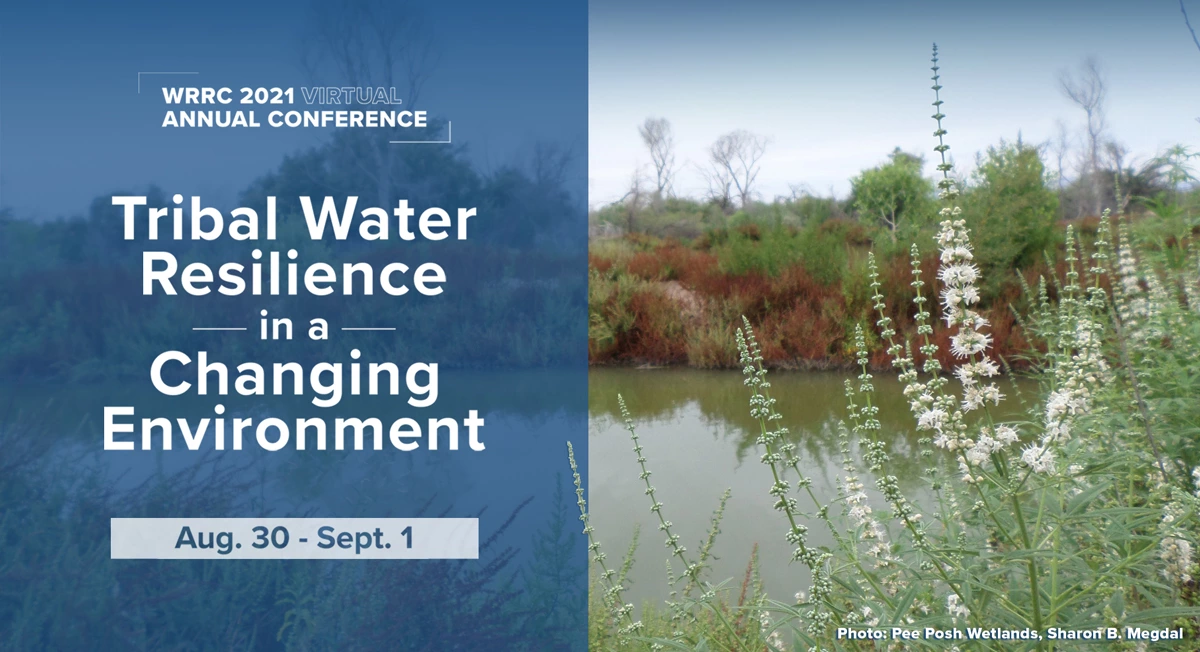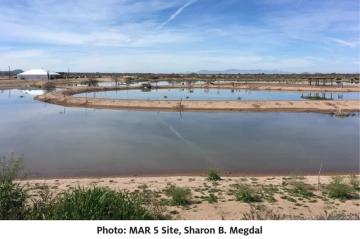
Resilience seems to have replaced security in discussions of water availability. Because the term was appearing everywhere, I started thinking about the definition of resilience even before we titled the WRRC 2021 Annual Conference “Tribal Water Resilience in a Changing Environment.” A Google search yielded the following definition from Oxford Languages: “the capacity to recover quickly from difficulties; toughness.” This definition was not satisfying. It only triggered additional questions: What does it mean to recover and what is the time dimension for quickly?
At the May 2021 International Arid Lands Consortium Conference, Addressing the Environmental Challenges of Arid Lands, University of Arizona Professor Don Falk advised attendees to think about the definition of resilience somewhat differently in the context of forests and fires. He noted that the traditional definition implies returning to the former state, but ecosystems reorganize and shift over space and time. They are always changing. He asked whether we should incorporate this natural reorganization into the definition of resilience as an essential process by which ecosystems adapt to changing conditions. Resilience can therefore mean maintaining the integrity of the system through adaptation as well as resistance (toughness) and recovery.
With the help of WRRC student assistant Peyton Smith, I identified a few relevant definitions. From Professor Kathy Jacobs of the Arizona Institutes for Resilience came this definition of resilience in the systems context: “Resilience is the capacity of a system to respond to a disturbance by resisting damage and recovering quickly without losing function or services. Resilience in human systems involves the capacity to manage risks and to identify opportunities for innovation.” The Udall Center for Studies in Public Policy posts a definition by Professor Chris Scott, which specifically mentions water: Resilience is “[t]he capacity of systems to retain essential functions, including provision of water and other ecosystem services.” Peyton used various sources to compile another definition, which specifically mentions human action: “Drought resilience combines natural environmental healing processes to return an environment to its original strength with human action toward a sustainable and non-stressful lifestyle.”
Do any of these definitions capture the Indigenous view of resilience? University of Arizona colleague Karletta Chief notes that an Indigenous definition of resilience would be more culturally based. Nikki Tulley, Ph.D. candidate in Environmental Sciences, recently offered this in a panel discussion: “Preparing for future generations is a way of resilience within Indigenous communities.”

Not surprisingly, the definitions on Google and in academic papers seem to focus on a western perspective of function. The pending shortage declaration on the Colorado River system due to reduced water supplies, along with the extreme heat in much of the western United States, has generated a great deal of media coverage, and I have received an unusual number of requests for comments by journalists. It is time to start thinking about the stresses experienced by our natural systems and the people and other living beings in them in a new way. We must think about how we as humans can adapt to the changing conditions, as our water systems may not return to their prior conditions. In fact, geological history indicates otherwise.
I would like to highlight key words from the above definitions – adapt, reorganize, capacity, functions, sustainable, lifestyle, future. Water resilience is not only about supply. It is about how the natural and human-connected systems live with the water. Perhaps a term to think about is coexistence: how we as humans co-exist with our natural water systems. Our ability to be resilient requires us to think about this co-existence in everything we do, including how we build and design our communities and their structures. In a recent article in the Guardian, Colby Pellegrino of the Southern Nevada Water Authority stated: “We live in the desert…We have to act like it.” While many of us in Arizona do “act like it,” community design, landscaping, and water use practices indicate that some do not. We have to set an example for those moving to our area from elsewhere and build for our natural arid and semi-arid conditions. We can hope the Colorado River system recovers to its status for much of the last century; however, the past 20 years suggest we cannot count on that recovery. In addition, we must recognize that because most groundwater used in the region is fossil groundwater, it is not being replenished naturally at the rate it is being used.
While we can point to prudent preparations for adverse Colorado River water conditions, such as water banking, the Drought Contingency Plan, conservation programs, and technologies that augment usable water supplies, let’s take time to listen and learn about the various perceptions, perspectives, and practices of those whose ancestors have lived in our region since time immemorial. I encourage you to join us for our annual conference, Tribal Water Resilience in a Changing Environment, which will be held virtually in three-hour segments over three days, from August 30 through September 1, 2021. Registration is free. The program for the conference, which is dedicated to the legacy of pioneering tribal water rights lawyer Rod Lewis, will be posted soon.
We respectfully acknowledge the University of Arizona is on the land and territories of Indigenous peoples. Today, Arizona is home to 22 federally recognized tribes, with Tucson being home to the O’odham and the Yaqui. Committed to diversity and inclusion, the University strives to build sustainable relationships with sovereign Native Nations and Indigenous communities through education offerings, partnerships, and community service.

